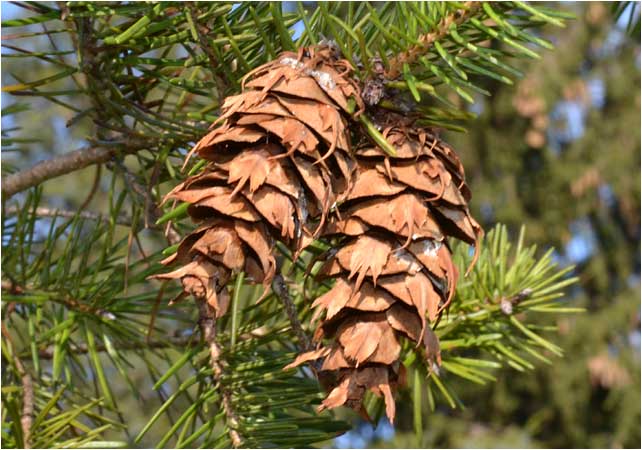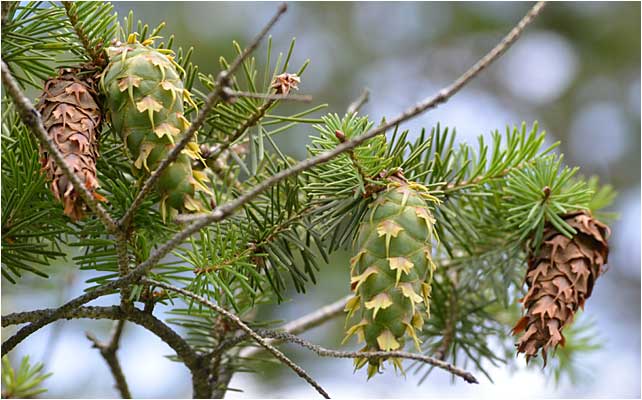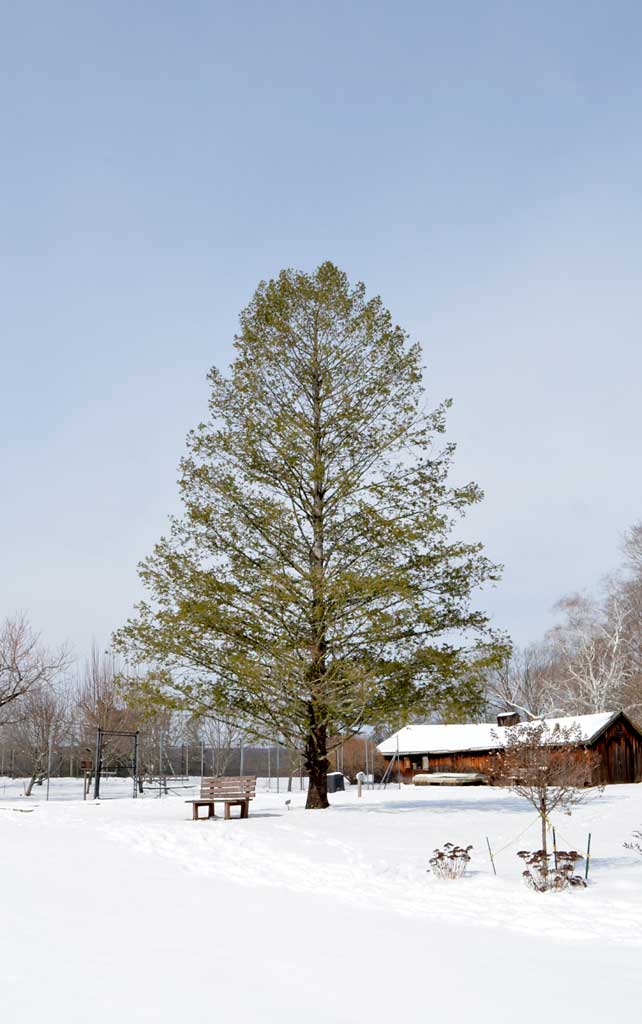27. DOUGLAS FIR
Pseudotsuga menziesii

One of the more interesting trees at the Westmoor Arboretum is the Douglas Fir. In the West, where it is local, they are the second largest and tallest tree in the U.S. They routinely reach 250 ft. in height, and are only passed by Sequoias. In the East, they rarely reach 8o ft. This tree was probably planted by the Hunter Family back in the 1940s.
UNIQUE CONES, CONIFER

The Douglas Fir is a conifer (evergreen) and is a monoecious tree (M/F cones on every tree). The cones are extremely unusual. First, they hang down while most fir cones stand up. Second, there's an additional "leaf" on top of each cone scale with three sharp tips (above). These are bracts, but no one is quite sure what they do. One guess is to deter the wrong type of predator from going after the tasty seed inside the cone.
MALE POLLINATOR CONES

Pictured here are two male pollinator cones, swollen in spring and in the act of pollination. The pointed bud above them is not a male pollinator cone but a needle bud.
FEMALE CONES

Old and new female cones, side-by-side. Once fertilized in Spring, the female cones embark on a 2 year journey. The new cones pictured above are in their second year, and the mature cones may have been on the tree for at least two years, perhaps a third. Cone production can change yearly due to environment and climate.
THE NEEDLE BUD, DOUGLAS FIR

The terminal bud in conifers (and most trees) is responsible for the growth of new needles (leaves) and is often overlooked. Here, we see a swollen Spring needle bud that has broken out from its winter protection and is about to start dancing.
BREAKING NEEDLE BUD

As the needle bud "breaks" apart, the new LIGHT green needles begin to emerge. It happens quickly, and it happens on a small visual scale, but it is an essential part of the tree's annual renewal.
BREAKING BUDS, NEW GROWTH

As the Douglas Fir buds break out with tiny new needles, those needles become the new, healthy growth on branches. Always lighter green.
WINTER

The Westmoor Arboretum, Douglas Fir, Winter. New Orchard, background. Old shed, background. Young Panicle Hydrangea tree/shrub, foreground. A century of Westmoor, one photo.